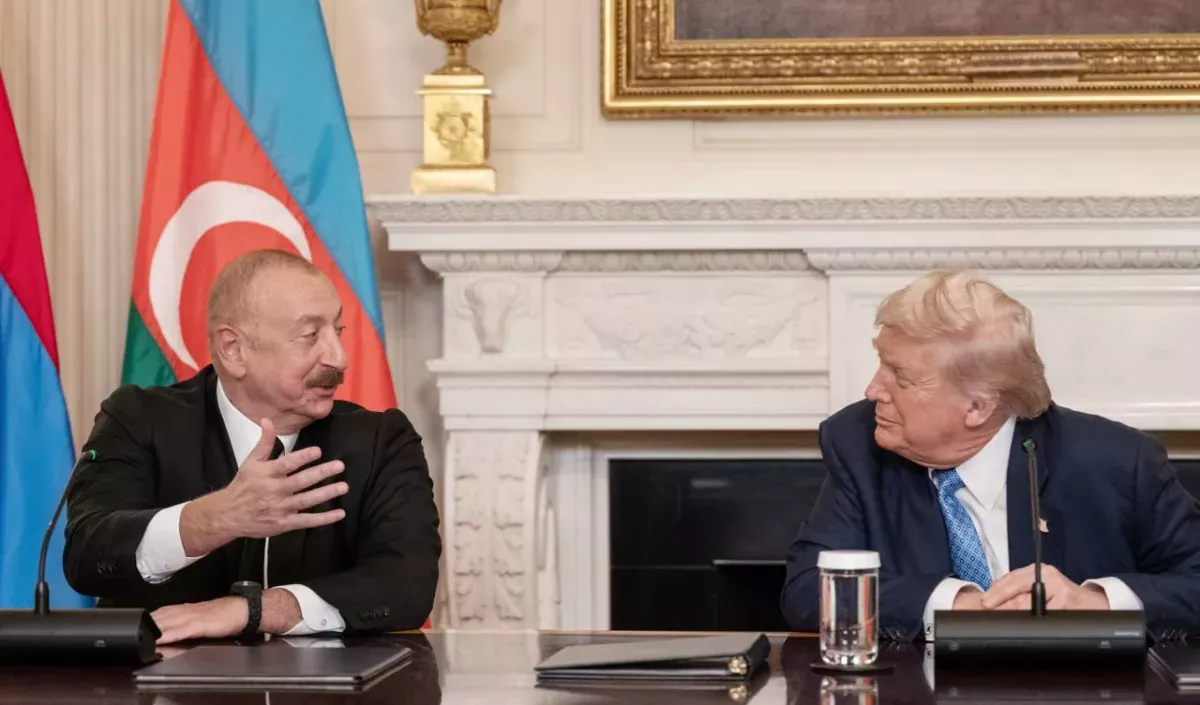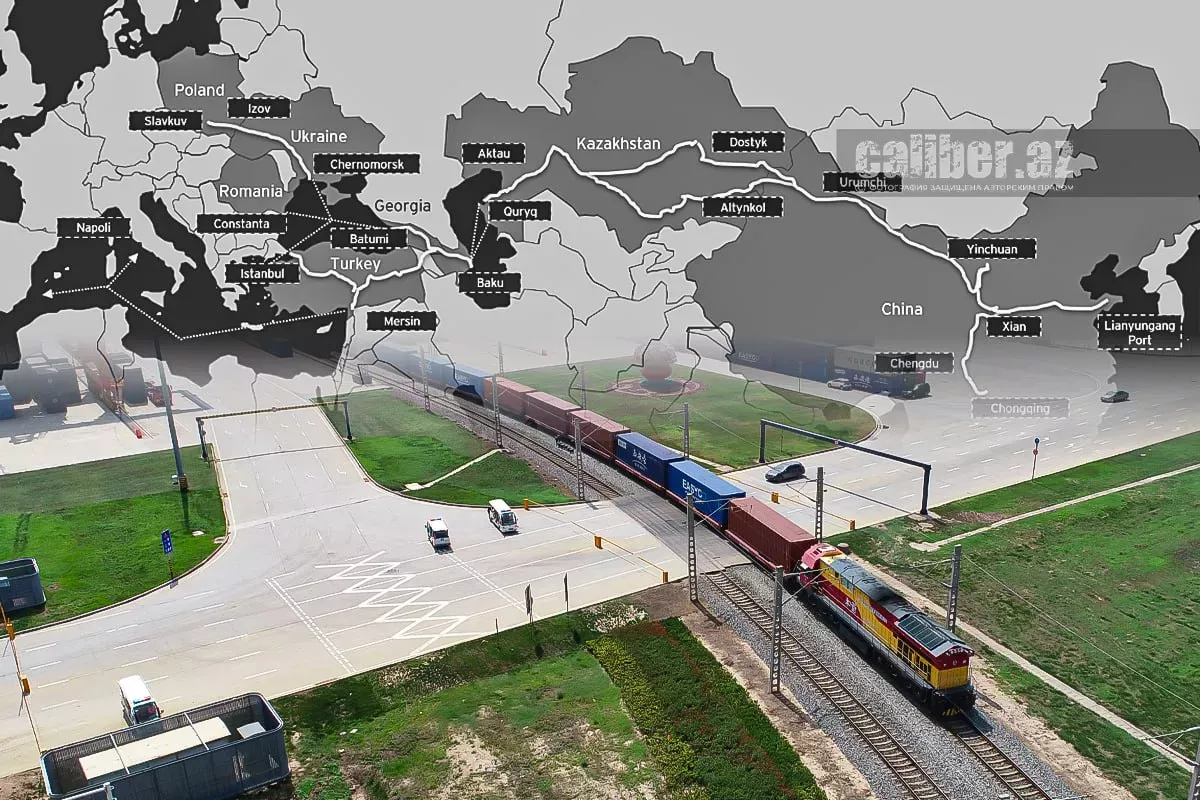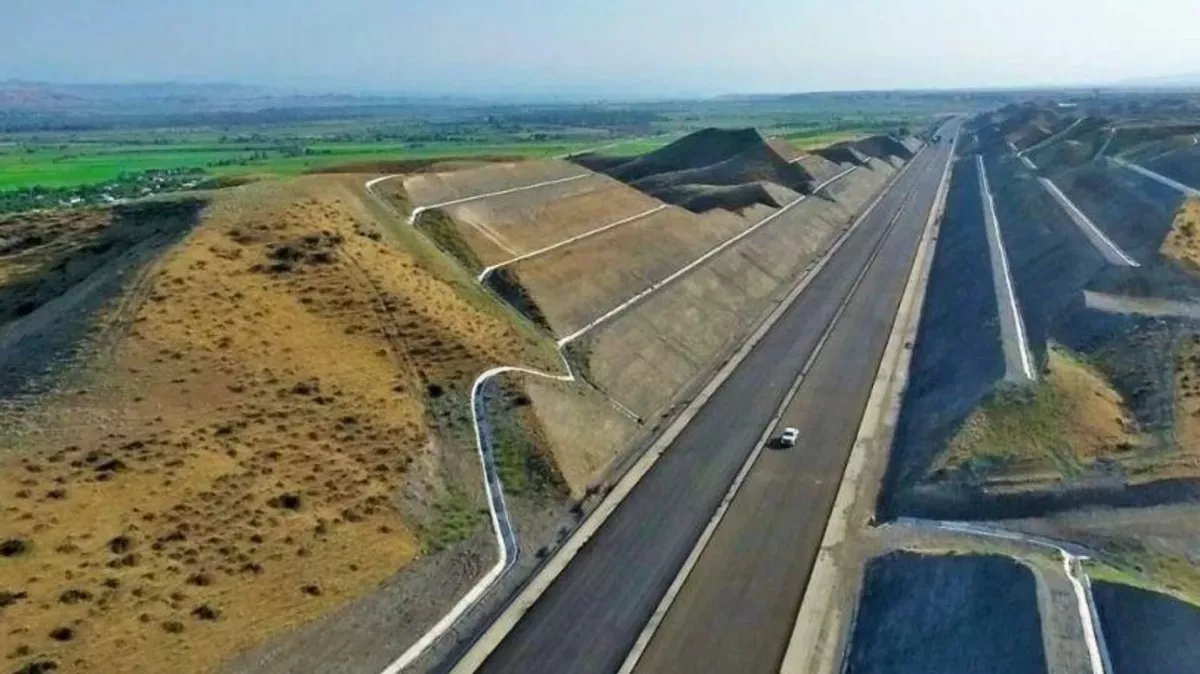Linking Europe, Central Asia: Zangezur Corridor & Washington’s move Article by The National Interest
An article dedicated to the economic and strategic aspects of the Joint Declaration signed by Azerbaijan and Armenia in Washington has been published in the American magazine The National Interest. Caliber.Az presents an abridged version of the article.
Editor’s note: The author, Michael Rossi, is a lecturer in Political Science at Rutgers University of New Jersey, United States, and a visiting professor at Webster University, Tashkent.
“In August, Armenian prime minister Nikol Pashinyan and Azerbaijani president Ilham Aliyev signed a US-brokered peace agreement [Joint Declaration – ed.] in Washington, formally ending decades of hostilities. Central to the deal is the “Trump Route for International Peace and Prosperity” (TRIPP), more commonly referred to as the Zangezur Corridor.

The corridor is a strategically important stretch of land in southern Armenia that connects mainland Azerbaijan with its Nakhchivan exclave and Türkiye. Under the agreement, Armenia maintains sovereignty, but the United States secured rights to develop and manage the corridor through a consortium for 99 years.
While this arrangement resolves a long-standing regional dispute, its significance extends beyond Armenia and Azerbaijan. TRIPP is effectively a new link in the Trans-Caspian “Middle Corridor,” the east-west trade route connecting China to Europe across Kazakhstan, the Caspian Sea, the South Caucasus, and Türkiye. The Middle Corridor is emerging as a strategic alternative for global supply chains, and the peace agreement gives Washington a direct role in its development.
The Middle Corridor’s growing weight
The Middle Corridor, also known as the Trans-Caspian International Transport Route, has gained traction since the war in Ukraine disrupted routes through Russia. Freight volumes along the corridor reached 2.3 million tons in the first half of 2025, an increase of around 7 percent compared with the previous year. Governments along the route are investing heavily to sustain this growth.
Kazakhstan, the pivotal state in the corridor, has accelerated major infrastructure programs. Work is progressing on the Dostyk-Moyynty double-tracking and the Almaty rail bypass. The government aims to expand transit cargo volumes to 100 million tons before 2035. Furthermore, President Kassym-Jomart Tokayev has made transport modernization a centerpiece of his agenda.
Between now and 2030, Kazakhstan plans to modernize or build over 5,000 kilometers of rail lines and repair 11,000 kilometers of existing track, a scale of work double that of the entire post-independence period. On the western end, Kazakhstan opened a multimodal terminal at Georgia’s Poti port in June, with an annual capacity of 120,000 tons.

These investments are complemented by “soft infrastructure.” Corridor members—Kazakhstan, Azerbaijan, Georgia, and Türkiye—are rolling out a unified digital transit document and harmonized customs procedures, supported by the United Nations Economic Commission for Europe’s push for multimodal digital freight standards. Together, these steps demonstrate that the corridor is becoming a coherent trade system.
In this context, the Zangezur Corridor plugs a missing gap in the Middle Corridor. Once developed, it will allow goods moving from Central Asia and across the Caspian to flow directly through Azerbaijan into Türkiye and Europe without diversions through Iran or Russia. The route’s reliability and throughput will increase substantially.
Because the agreement places development of TRIPP under US management, Washington gains a rare opportunity to shape the standards and financing of a trade artery in the South Caucasus. The corridor’s long-term lease to the United States means American companies and institutions will be central to its construction and operation.
The Middle Corridor’s strategic implications
The peace deal, therefore, carries implications that go well beyond conflict resolution. For Washington, three stand out.
The first is strategic presence. By taking responsibility for TRIPP, the United States acquires influence at a geographic chokepoint linking Europe, the Middle East, and Central Asia.
The second is a commercial opportunity. The need for investment in rail, energy, telecommunications, and logistics across both TRIPP and the broader Middle Corridor creates a pathway for US companies to enter supply chains that are geopolitically safer and sanctions-compliant.
The third is a broader geoeconomic play. With TRIPP in place, Washington has the chance to deepen its influence across the Caspian-Central Asia arc.

Meanwhile, supporting the Middle Corridor should be viewed through both strategic and economic lenses. Kazakhstan’s location makes it indispensable for the corridor’s success, and the country has repeatedly emphasized its desire for closer economic cooperation with the United States.
This cooperation need not be limited to transport. Kazakhstan holds some of the world’s largest reserves of critical minerals, including uranium and rare earth elements, which are increasingly important to US supply chain security.
Steps the United States could take
There are several practical ways Washington could support the Middle Corridor’s development. One is by helping advance digital and regulatory standards, from interoperable freight platforms to simplified customs regimes, which would cut transit times and reduce costs. Another is by partnering with Kazakhstan on critical rail and port upgrades that underpin the corridor, such as the modernization of the Caspian ports of Aktau and Kuryk.
US technical and commercial involvement in these projects would strengthen the corridor’s reliability while deepening bilateral economic ties. A third is by aligning transport cooperation with mineral supply initiatives, embedding corridor development within wider US economic priorities.
None of these steps requires large new commitments of resources. They do, however, require political attention and a recognition that Eurasian connectivity is strategically significant to Washington.
The Armenia-Azerbaijan Joint Declaration has been presented primarily as a breakthrough in resolving one of the post-Soviet space’s most entrenched conflicts. Yet its longer-term significance lies in the way it connects the United States to the Middle Corridor. By anchoring TRIPP, Washington gains a strategic foothold, new commercial openings, and a role in shaping Eurasia’s economic future.
The Middle Corridor is becoming a critical link in global trade, and supporting its development in partnership with Kazakhstan, Azerbaijan, Georgia, Türkiye, and Armenia aligns directly with US interests,” the article reads.








